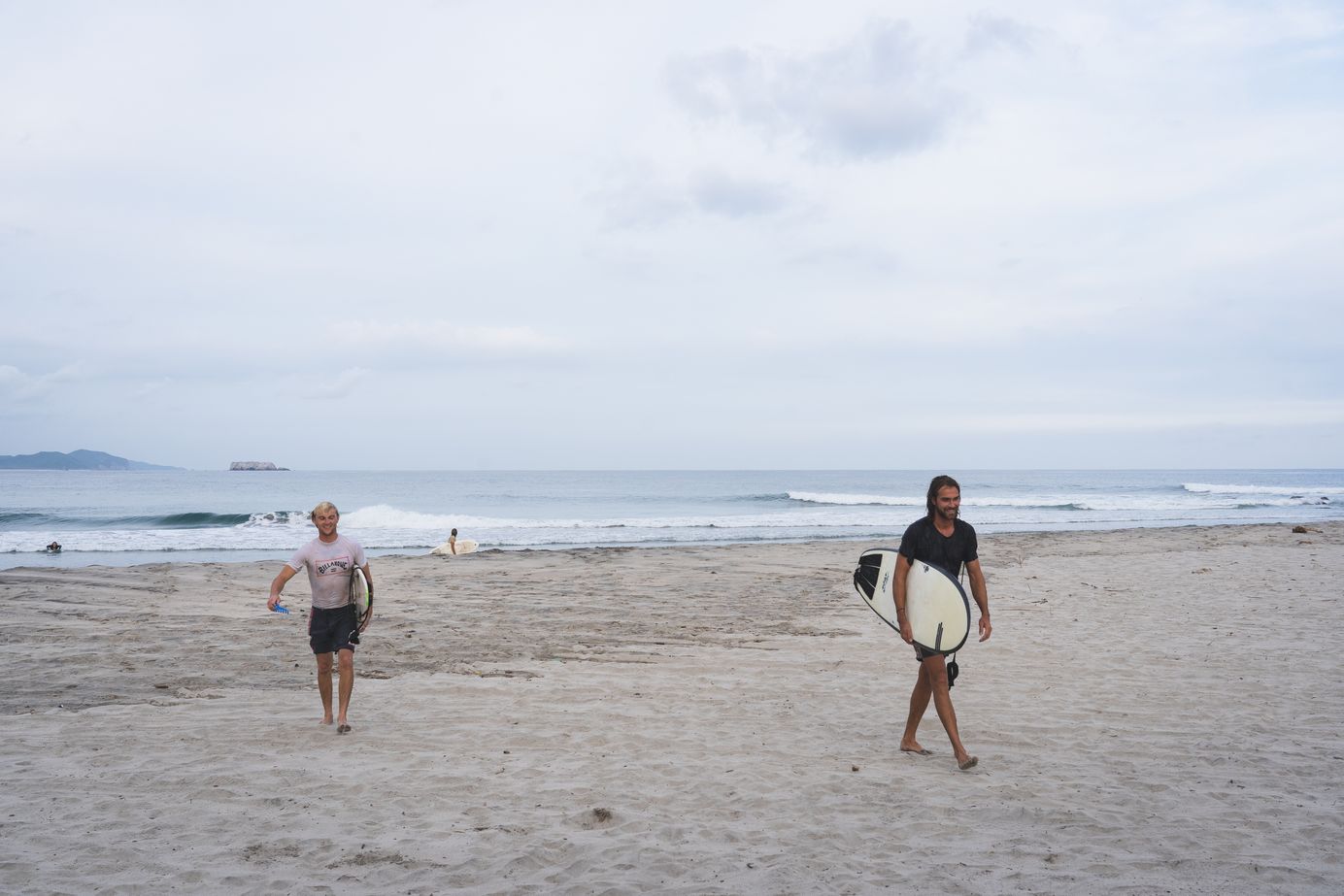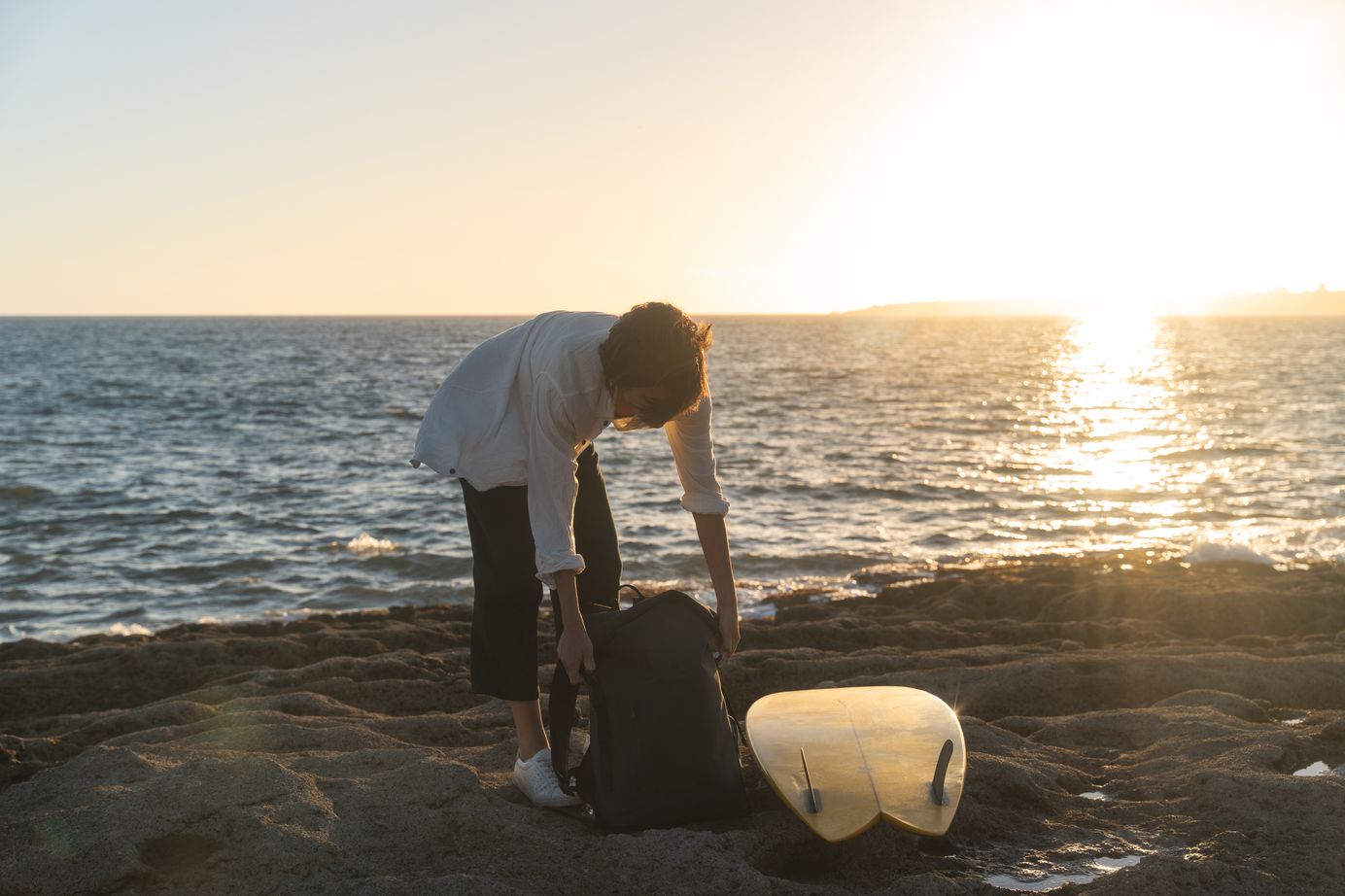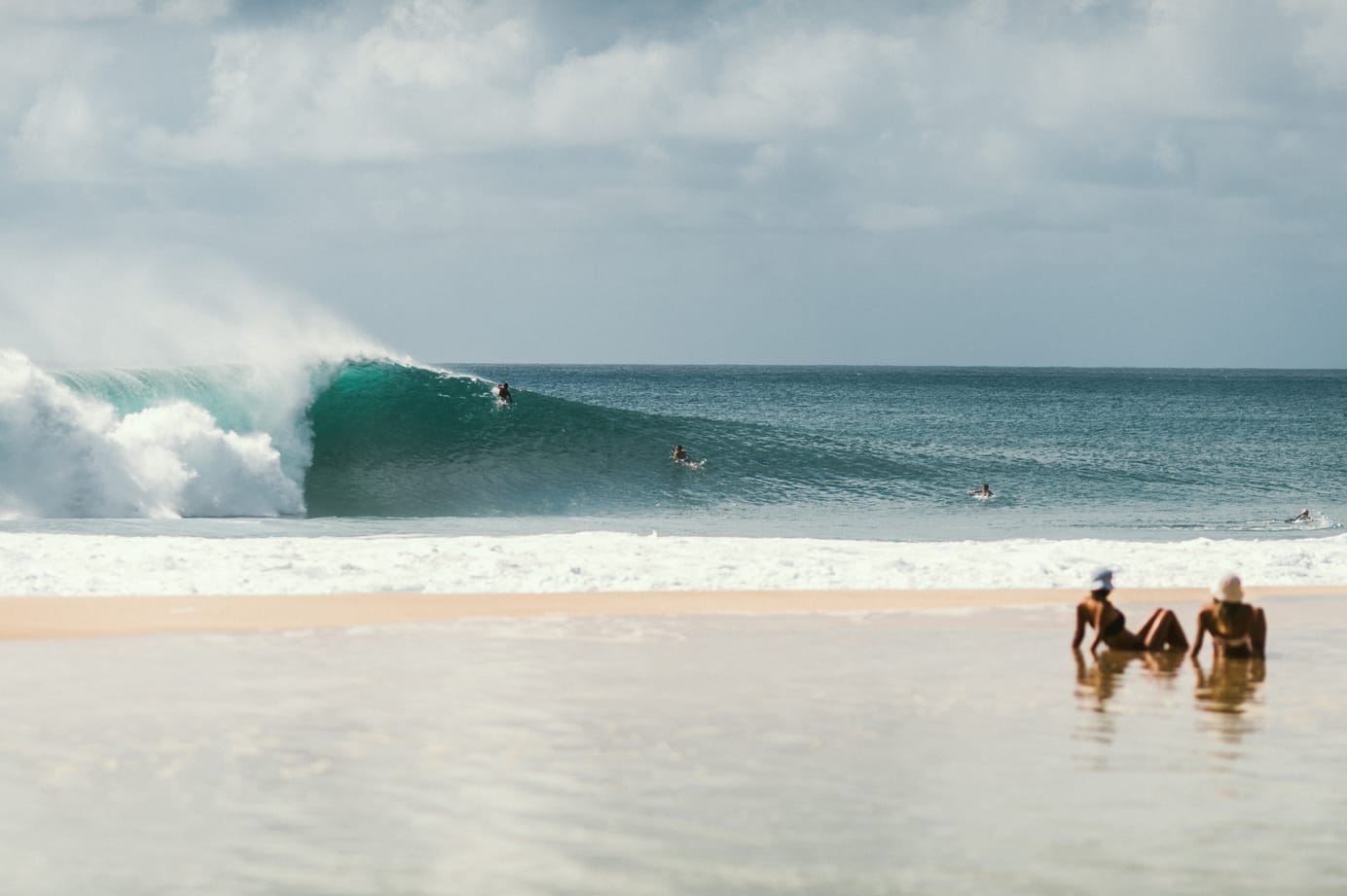
The Best Weekend Surf Trips from LA
Every surfer can relate to that nasty feeling, the merciless phenomenon that plagues you for weeks, or even months, on end. The symptoms include depression, restlessness, irritability, spasms, weight gain, weight loss, and in some severe cases, death. (Wait, really?)
I’m talking, of course, about the terrible, awful, no good, very, very bad phenomenon known as a flat spell. Be it unfavorable weather patterns, or perhaps the unsavory wrath of Neptune, sometimes our favorite pleasure machine just shuts down. The simple pleasure of checking the waves becomes an exercise in depression that is best avoided. Your wetsuit is thoroughly dry, your favorite board collects dust, and you may have even taken up pickleball. All past signs of comfort and pleasure are now just somber reminders of inescapable despair. Even the future (the premium extended forecast) is a bleak and dreary stretch of the wrong-colored boxes and uninspiring numbers.
Or maybe not...maybe there's rideable surf but you're just ready for a change of pace. You're over the cold water, crowds, small waves, short rides, and that one dude at your local break that is always out and just never stops talking.
While LAX is not my favorite airport, it sure opens up the surf world like a proverbial oyster. With daily direct flights to nearly 20 surf destinations, you've got some solid options especially if you have plenty of time and a big budget–if you do, hit us up and we will plan you a dream surf trip that will take you around the world.
If you're limited to a few days or a long weekend, you still have plenty of options so let's dive in and explore the best weekend surf trips from LA.
Hawaii
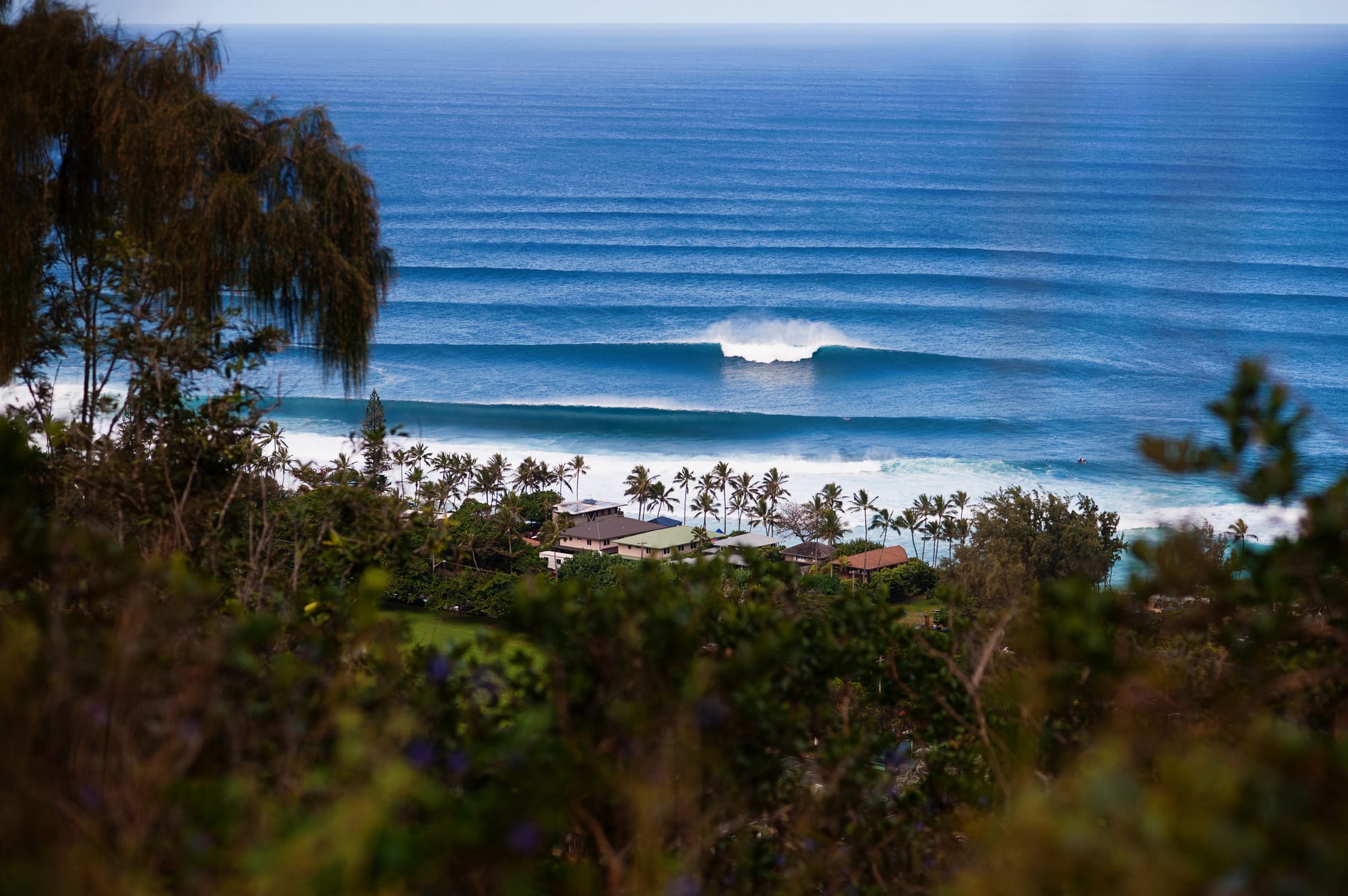
Overview: With year-round surf and daily direct flights to Oahu, Maui, Kauai, and the Big Island, factor in the quality and the diversity of the surf and it's easy to see why Hawaii is the top of the list.
Focus: North and South Shores of Oahu.
Seasonality: October-March on the North Shore, April-September on the South Shore. These are general guidelines, either shore could have waves during their offseason.
Swell direction: Being an island in the middle of the Pacific, Oahu picks up nearly everything and the varied coastline can handle different periods and it's always offshore somewhere.
Average water temp: 73F in the winter months, and 80F in the late summer. You can often get away with 'skinning' it in the winter (depending on your tolerance) but it's good to have a wetsuit top or even a springsuit. When the winds blow it can feel chilly, especially if you've been out for a few hours and then sun is going down.
Difficulty level: All levels. The best waves like Sunset, Pipe, and Bowls are for the experts — but are doable for advanced surfers at smaller sizes, too. Waves like Waikiki and Puena Point are great for more novice surfers–just be sure to always stay safe, respect the locals, and talk to the lifeguards if you are unsure. We suggest always surfing with a guide or instructor if you are new to Hawaii.
Marquee wave(s): Pipeline, Sunset, Waimea, Ala Moana….too many to count.
Perks: For US citizens, no passport or visa needed. No language barrier. Lots of lodging options on the around Waikiki and Honolulu.
Things to Consider: Lodging options on the North Shore are very limited and often expensive. There is a housing crisis in Hawaii and many locals are struggling to find affordable decent and affordable places to live. Remember that you are a visitor to a place with a long history of exploitation, treat others with respect and kindness.
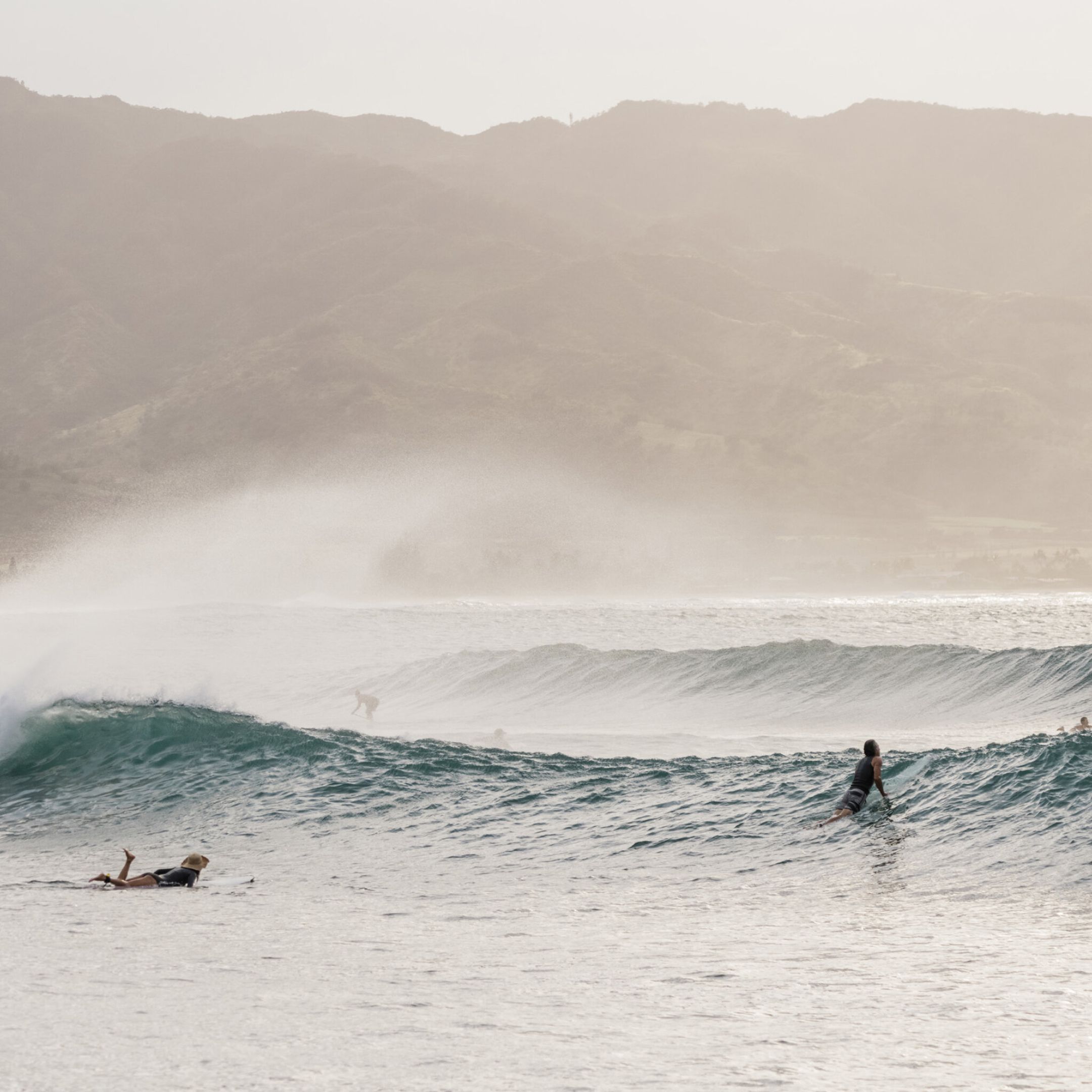
El Salvador
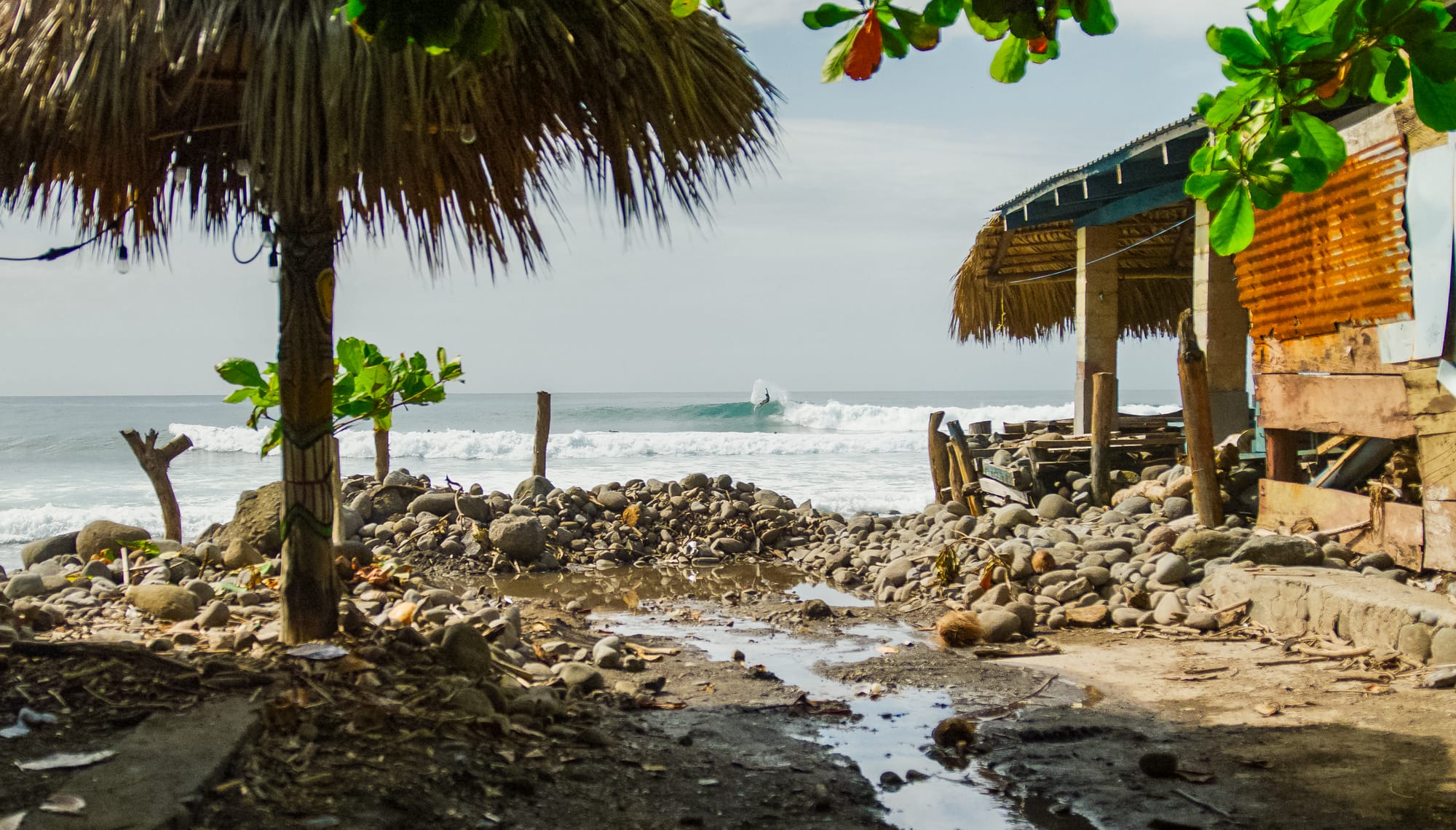
Overview: This small Central American nation has been making a big impact on the surf scene for the past decade with big investments in security and infrastructure. The plentiful right-hand point breaks provide an excellent array of options for surfers from around the world.
Focus: La Libertád
Seasonality: April-September are peak season when Southern Hemi swells offer consistent action throughout the country. October-April still serve up fun days but on average are smaller and less consistent.
Swell direction: S-SW
Average water temp: 80F-86F. No wetsuits or neoprene tops need in El Sal, regardless of the month. We recommend hooded rashguards to be able to surf through the peak of the day to beat the crowds and not get roasted in the process.
Difficulty level: All levels. The big days at the premier waves are best left for advanced surfers but beginners can always find a safe zone to practice when with a guide.
Marquee wave(s): Punta Roca, Punta Mango
Perks: Steady surf, tons of affordable lodging options, blossoming local surf scene and diverse international crowd, lively nightlife. It's a 6 hour flight to SAL and then a 45 minute drive to the coast. Round trip tickets start around $300.
Things to Consider: Rocky shorelines make for a tricky entry/exit and the crowds can be thick at the best spots for the morning / evening sessions.

Costa Rica
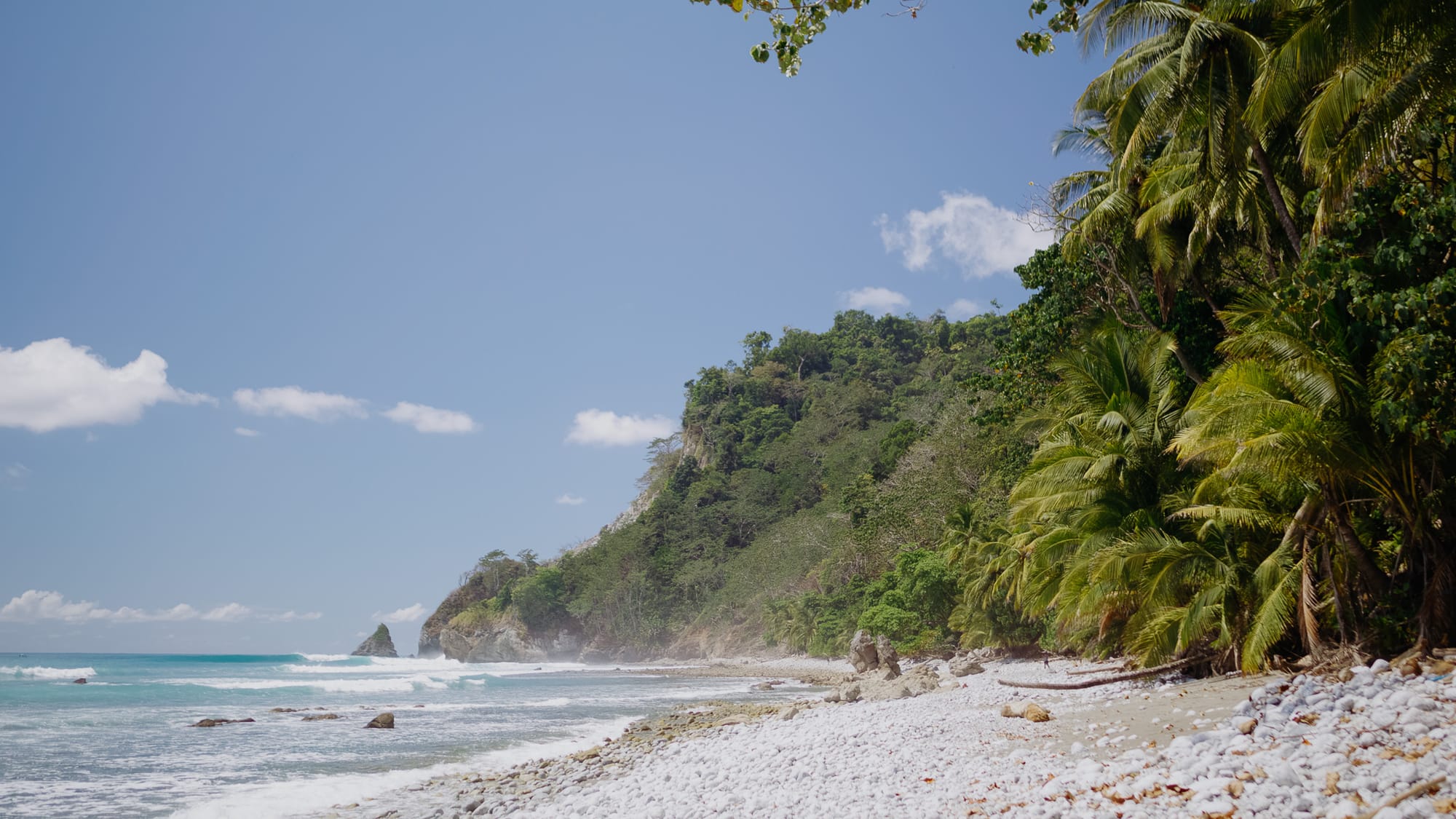
Overview: Two words, Pura Vida. If you've never heard that before, well, then you're certainly due for a trip to one of the most beautiful and surf-rich countries on our lovely planet. When it comes to the surf lifestyle, you won't find a country in this hemisphere better suited to accommodate every type of modality– from ballin' on a budget to ballin' on a yacht, and everything in between.
Focus: Pacific Coast
Seasonality: April-September are peak season when Southern Hemi swells offer consistent action throughout the country and the points in Southern Costa can really come to life. In Northern Costa Rica, the months of December-March can have fun-sized swell with consistent clean conditions.
Swell direction: S-SW-W
Average water temp: 79F-86F. Similar to El Sal, you never need a wetsuit or in Costa, regardless of the month.
Difficulty level: All levels. More people have learned to surf in Costa Rica than, well, almost anywhere else but that doesn't mean advanced surfers can't get their kicks too. Waves like Witches Rock are fast and mean on the big days, the Caribbean side is holding some slabs that make even the hardiest of pros think twice about going for a late drop, and then there are point breaks that are the stuff surf dreams are made of (cough cough) Pavones.
Marquee wave(s): Witches Rock, Pavones, Playa Hermosa, Sunset Reef, and the list goes on and on...
Perks: In Northern Costa, towns like Santa Teresa and Nosara are waxed up and down with hip hotels, villas, cafés, restaurants, tattoo studios, and, oh yeah, miles and miles of fun beach breaks. Southern Costa is a different speed, much more quiet on the nightlife side of things, and active and lively in the forest.
Things to Consider: While it may seem that Costa is "easy" to figure out and you can surf good waves out front of wherever you stay, going with a local guide unlocks waves and vibes you'd miss out on as just another tourist.
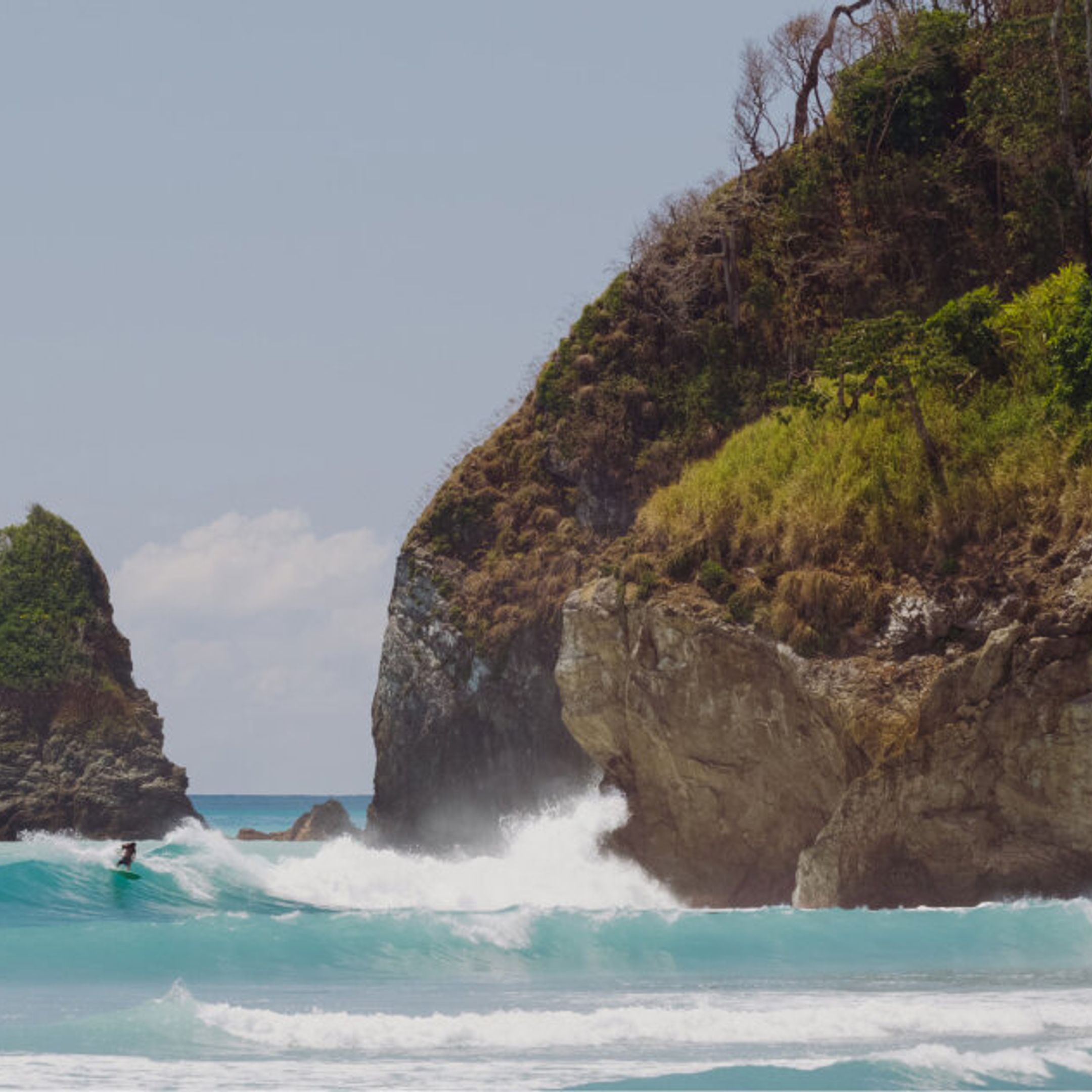
Nayarit, Mexico
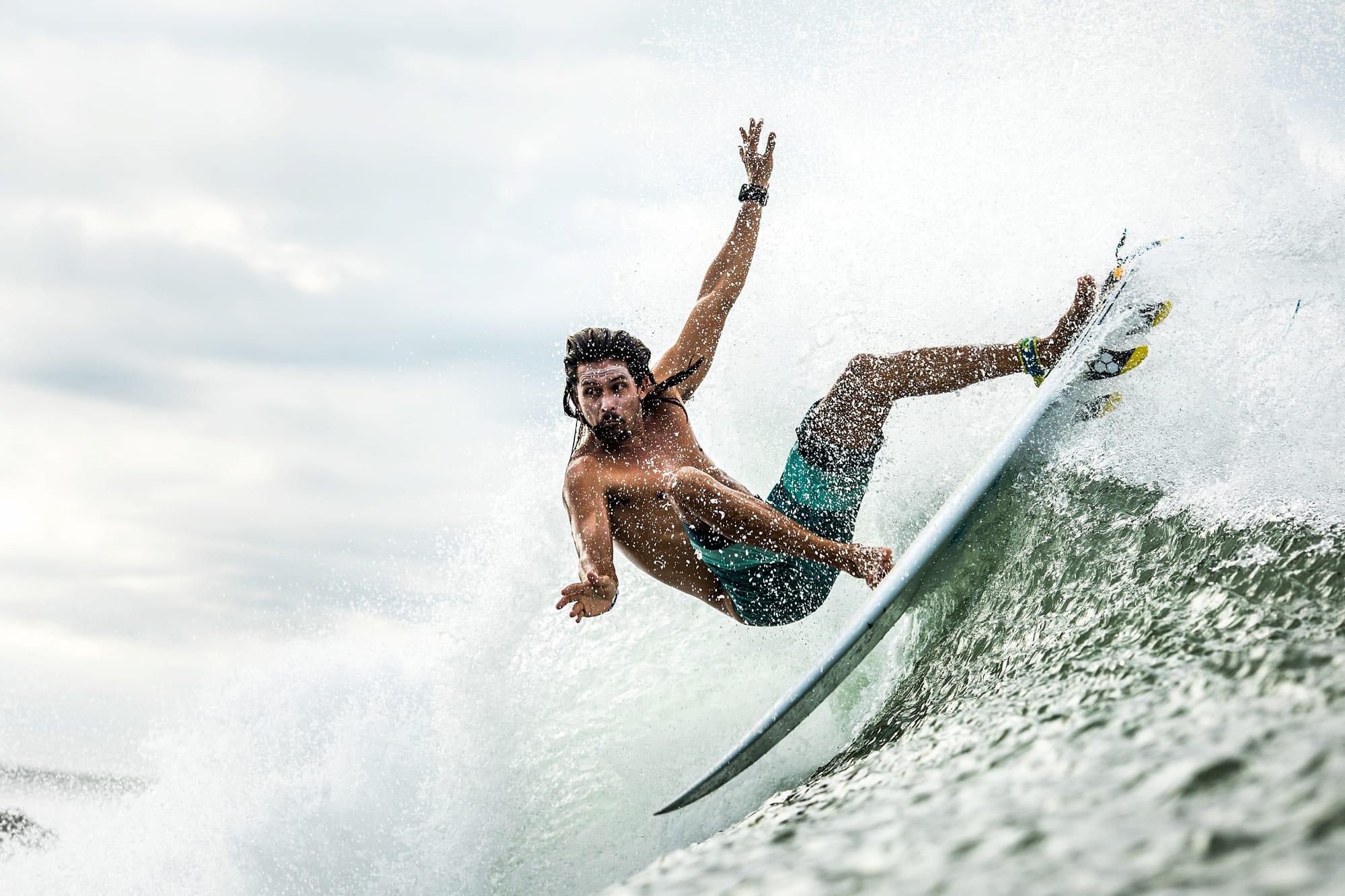
Overview: A quick flight into Puerto Vallarta puts you within reach of a vast assortment of waves, both rights and lefts, featuring point breaks, reefs, and beachies. The surf is as varied as the lodging, nightlife, and activities available throughout Riviera Nayarit.
Focus: Punta Mita + Sayulita
Seasonality: While the array of setups within a 1hr drive can keep you surfing year-round, the waves around Punta Mita light up best from October to April when NW swells pop off. Given the variety in the area, a local guide can get you on good waves year-round.
Swell direction: NW-W-SW-S
Average water temp: 75F-86F. Packing a wetsuit top, or even a spring suit can be a wise choice for November to February, especially for dawn patrol. Otherwise, the rest of the year is ideal for skinning it + with proper sun protection.
Difficulty level: All levels.
Marquee wave(s): Bahia, Sayulita, La Lancha, Burros
Perks: Whether you want boho-chic vibes in Sayulita or prefer modern upscale resorts there's something for everyone. Nightlife in Sayulita is steady rockin', especially during busy seasons. If you want epic golf and kush digs then Punta Mita is your jam. Take a day trip up to San Pancho and you may just score some fun beachbreak action.
Things to Consider: Be careful in the water at Sayulita after it rains and remember that certain restaurants may be a roll of the dice in the food poisoning department.
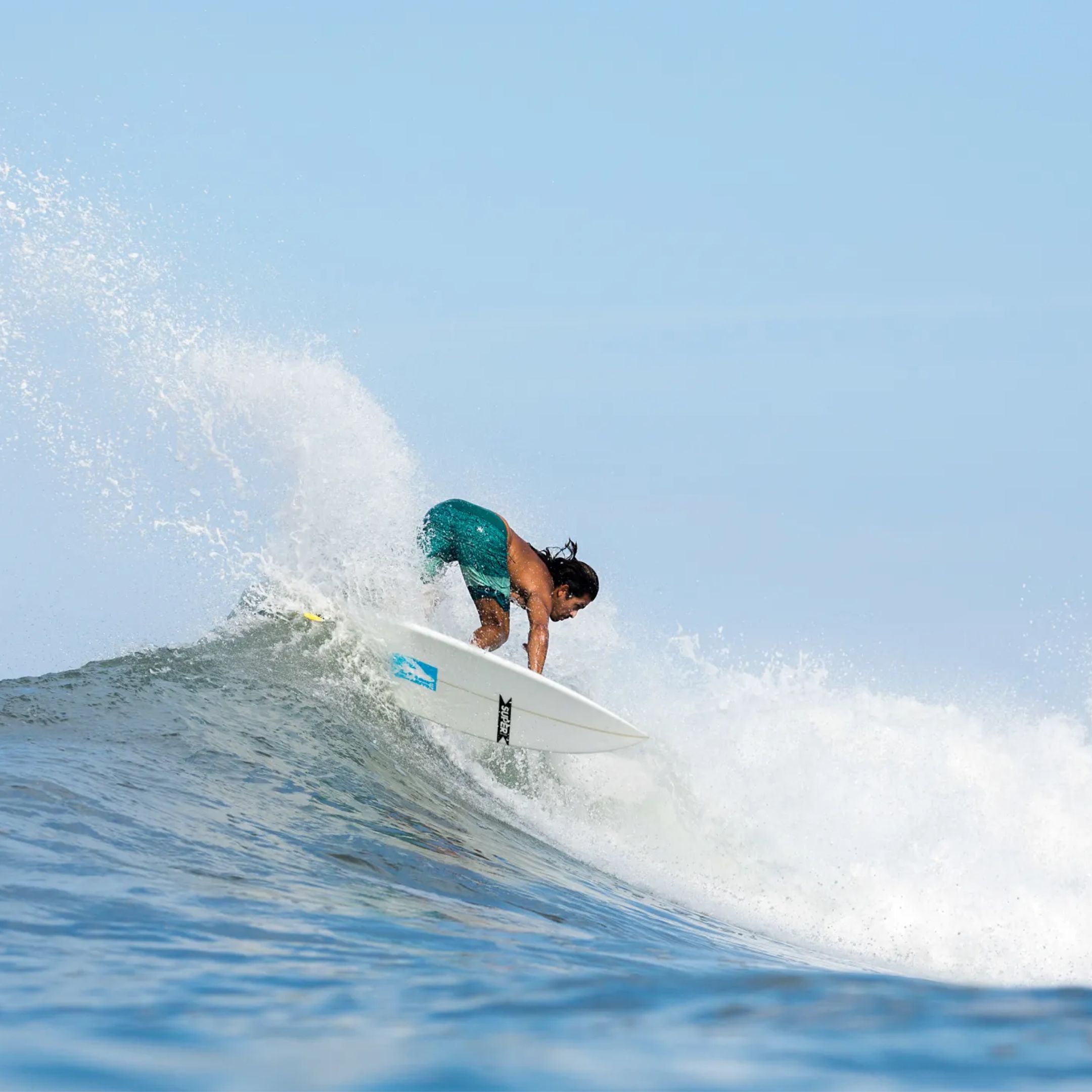
Oaxaca, Mexico
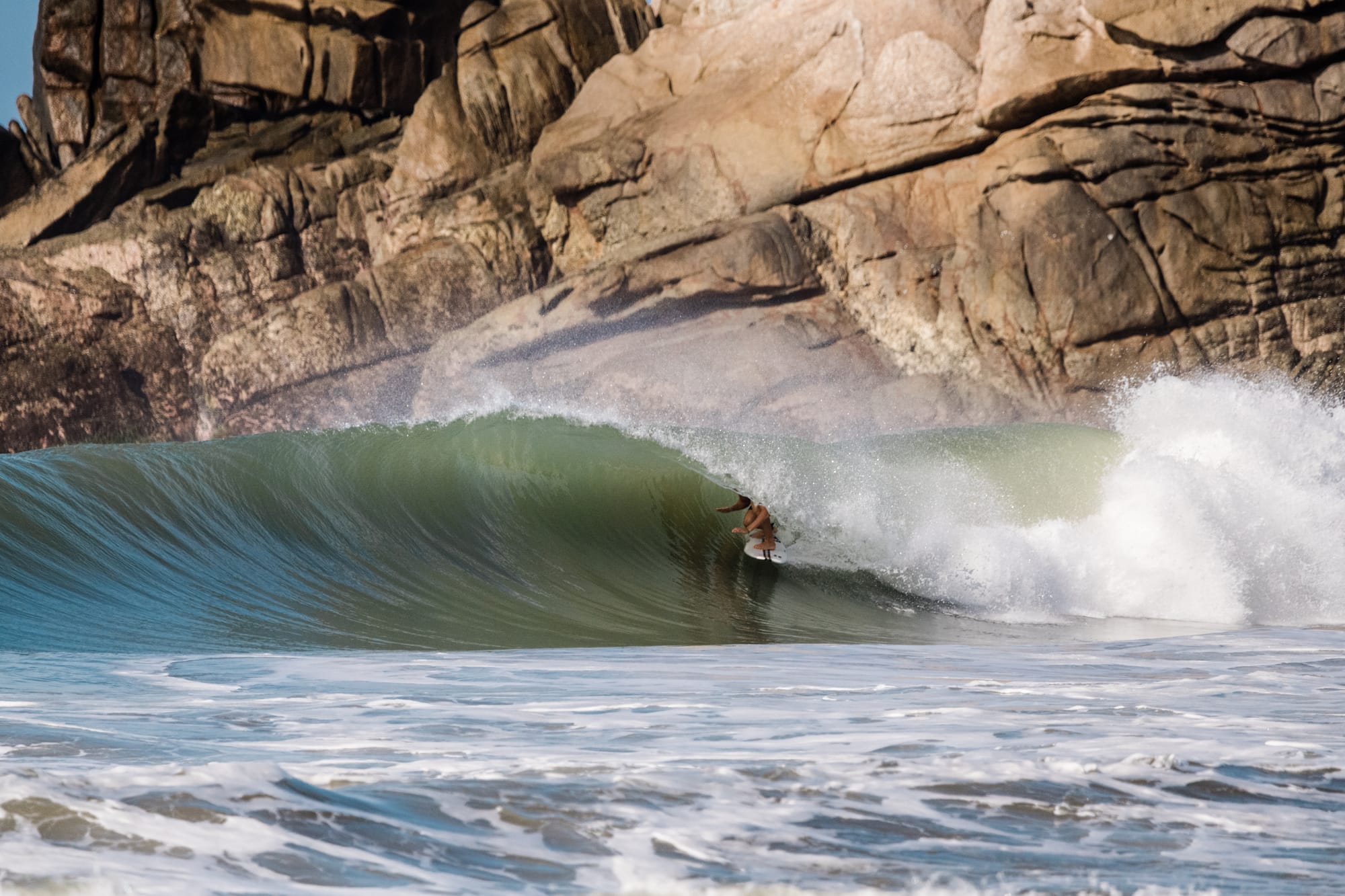
Overview: Molé and Mezcal aren't the only things Oaxaca is known for because the sand-bottomed right pointbreaks are known around the world. While surfers have known about Puerto for ages, it wasn't until 2006 that Barra de La Cruz came out hot on the scene after the Rip Curl Search contest (see video below).
Focus: Southern Points from Huatulco to Salina Cruz
Seasonality: Pretty quiet from November to February but things heat up fast in April and can carry on steadily through October. Oaxaca picks up some of all S swells.
Swell direction: SW-S
Average water temp: 75F-86F. Packing a wetsuit top, or even a spring suit can be a wise choice for November to February, especially for dawn patrol. Otherwise, the rest of the year is ideal for skinning it + with proper sun protection.
Difficulty level: All levels but best for intermediate to advanced in the peak season of May-September. Beginners should aim for the shoulder season of March to April or October to November. Guides are required to access a majority of the waves, locals don't take kindly to gringos without guides
Marquee wave(s): Barra de La Cruz, Puerto Escondido, Punta Conejo
Perks: There's so much to love about Oaxaca it's hard to even begin to explain; two words "amazing" and "affordable", Huatulco is full of rad lodging options and cool restaurants from taco shops to fine(ish) dining.

Things to Consider: No direct flights are available to Huatulco (HUX) unless you can fly out of Tijuana (TIJ) but that is only 2x per week. Otherwise you must connect through Mexico City (MEX) or Oaxaca City (OAX). Sorry goof foots but there are no consistent lefts south of Huatulco, occasional beach break lefts can be found but this zone is all about the rights!


